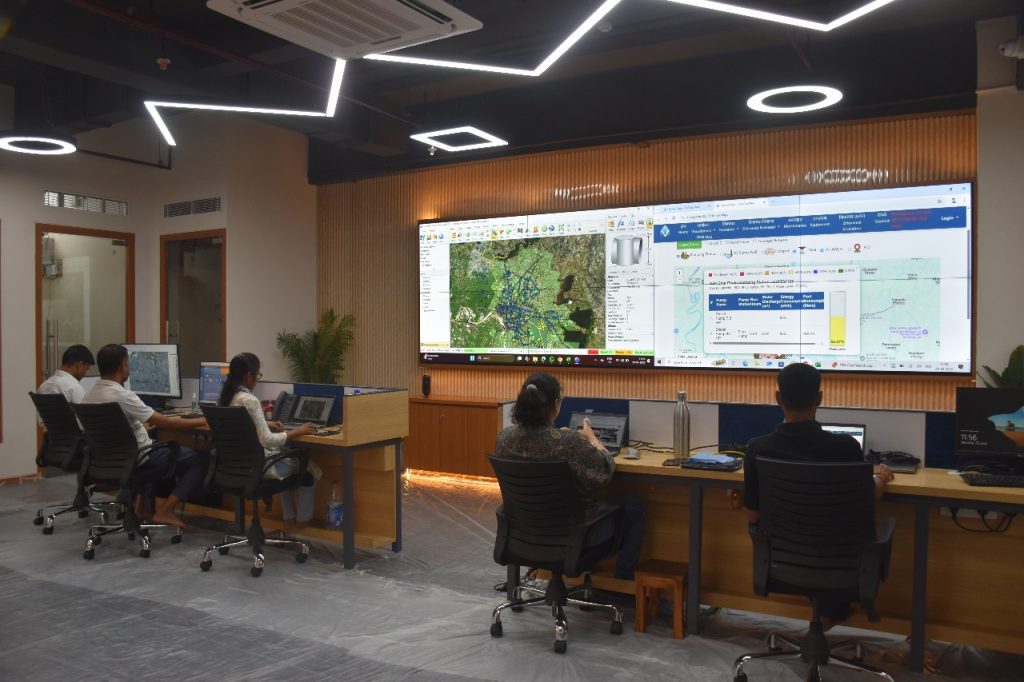- Gorakhpur launches first UFMC flood control hub
- AI, sensors drive early warning and DSS systems
- Waterlogging time cut, pump failures drop by 60%
- Long-term plan includes pond revival, more sensors
Gorakhpur’s UFMC: A Data-Driven Fight Against Urban Flooding
Gorakhpur: The city has launched its first Urban Flood Management Centre (UFMC), led by 2017-batch IAS officer Gaurav Sogarwal, Municipal Commissioner of Gorakhpur. Started in May 2025, the project is the first coordinated urban flood response system in Uttar Pradesh. It is funded by the National Disaster Management Authority (NDMA) through the State Disaster Mitigation Fund.
Battling a Long-Standing Flood Threat
Gorakhpur sits in the Terai region at the confluence of the Rapti and Rohini rivers. Much of the city lies below the High Flood Level. Monsoon rains often overwhelm the limited drainage system. For years, residents have battled knee-deep stagnant water, clogged drains, and underperforming pumps.
Inside the Urban Flood Management Centre
Housed in a 24×7 control room, the UFMC combines an Early Warning System (EWS) and a Decision Support System (DSS). IoT sensors, AI-powered forecasts, and automated pumping controls drive its operations. The motto — Predict. Prepare. Protect. — is delivered through:
- EWS: Real-time weather and water-level monitoring, hotspot mapping, advance flood forecasts, and automated alerts for rainfall, water rise, or pump fuel shortage.
- DSS: Full integration of drainage infrastructure into hydrological models, SCADA-based pump automation, citizen grievance portals, and data-driven drain cleaning schedules.
Mapping Every Drain, Clearing Every Block
Before launch, teams surveyed and digitised 14 primary, 149 secondary, and 138 tertiary drains. They identified 28 flood-prone hotspots and 80 important locations for continuous monitoring. Three complete drain-cleaning rounds were carried out before the monsoon, guided by water-level data. Pumps were serviced, choke points cleared, and mobile units deployed to high-risk areas.
Measurable Impact After Launch
Waterlogging time has dropped to under 90 minutes in most areas. Pump breakdowns have declined by 60%, and forecast accuracy has improved by 80%. Over 70% of citizen complaints are resolved quickly, and inter-agency coordination during rainfall has improved by 65%.
The Team and the Tech
The UFMC brings together Emergency Responders, Flood Modellers, and Quick Response Teams with mobile pumps and suction units. All updates are tracked live on a central dashboard connecting the Municipal Corporation, Gorakhpur Development Authority, PWD, and Jal Nigam. This ensures targeted action and efficient resource use.
Building Long-Term Resilience
Plans include expanding sensor coverage, linking alerts with upstream river management, and restoring ponds for natural water storage. DSS insights will also guide sustainable city planning.
“For Gorakhpur, our aim is to make waterlogging history,” says Sogarwal. “Each year, preparations will get sharper.”
As monsoon clouds gather, UFMC’s glowing dashboards offer more than numbers — they reflect confidence, planning, and a new approach to turning floods from disasters into manageable events.







